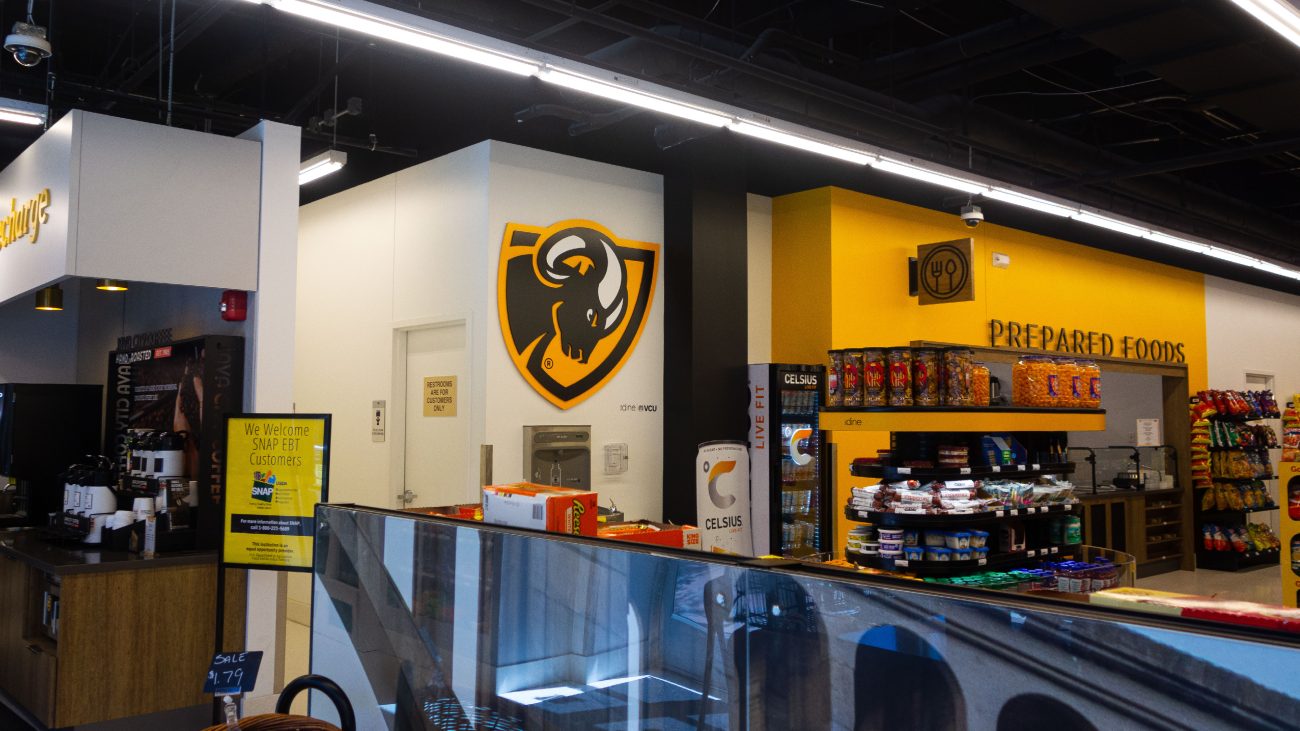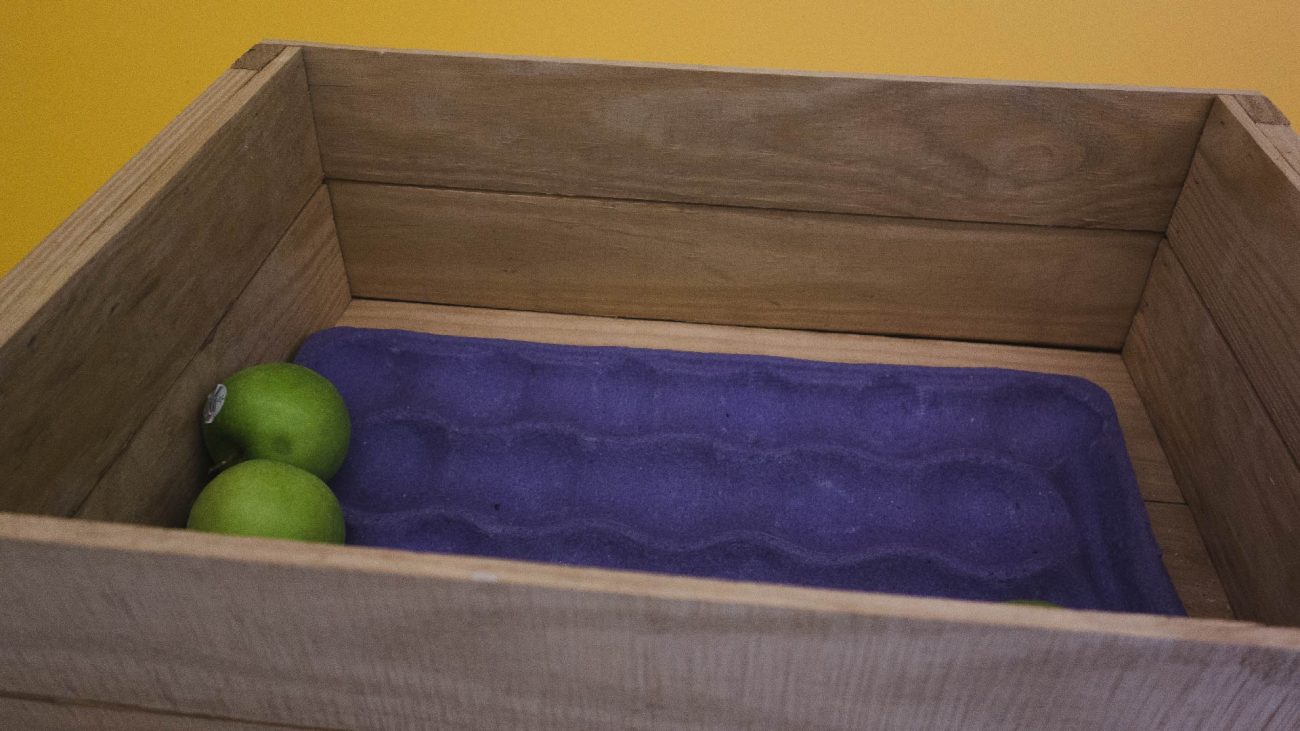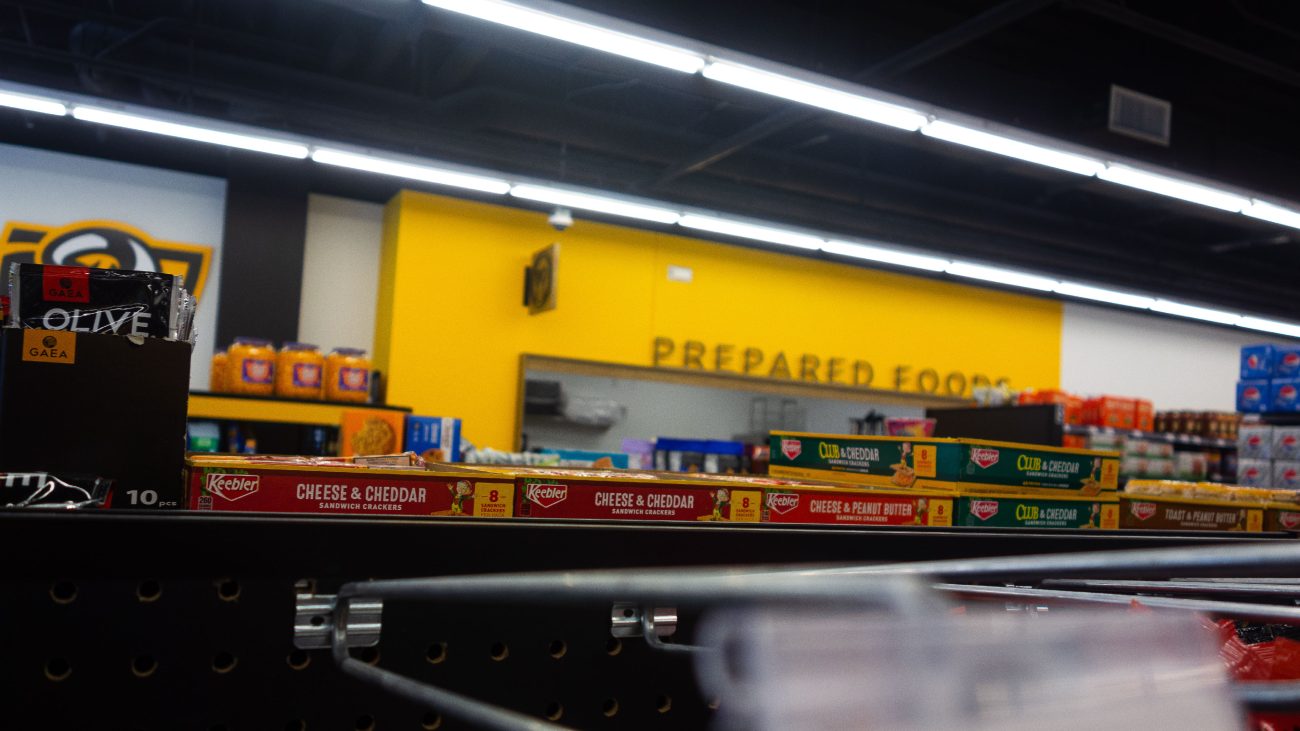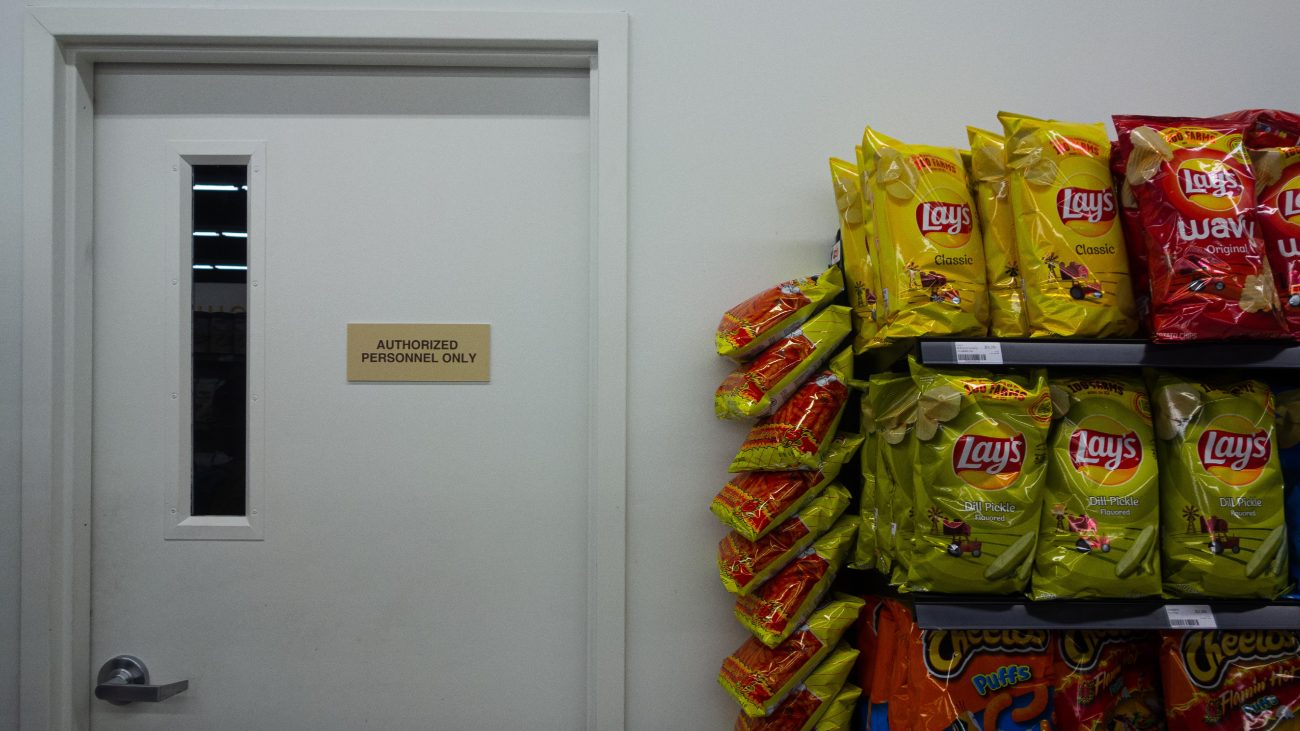My gut reaction of disbelief rolled straight into panic as I ran down the road. I had not just trudged through what felt like an hour-long walk to just sit back and watch my milk carton roll into the street to be forsaken. As I raced across the road seizing my carton from the impending doom of a rogue Richmond driver, I regretted trusting that flimsy plastic Kroger bag. I just wanted to have cereal.
My freshman year began during the height of the COVID apocalypse. Due to the virus and increased safety measures, most of the dining options covered in my meal plan were shut down or operated during very limited hours. Shafer Dining Court seemed to be the place to go. Their everyday pizza bar sounded great at first, but within a week their greasy filler food had destroyed me. I ended up living on Einstein Bagels and Bento Box for months, and I didn’t see a single fruit until I went home for holiday break. Finding food that didn’t make me feel like crap was hard, and for anyone I knew who had any food restrictions it was impossible. Even if one had access to a communal kitchen—or smuggled in an illegal hot plate—getting your hands on actual groceries was a trying process. Most freshmen didn’t have cars, and freshman now still don’t, so if you wanted any sort of groceries, even just milk or eggs, you had to hoof it to Kroger and back and hope that your bags didn’t break over the course of the walk. So my friends ended up existing on coffee and cup noodles, all while smiling through the impending scurvy.
When Virginia Commonwealth University first announced that they would be opening a grocery store in the middle of campus, I was all in and ready to sing their praises. “VCUnews” reported it would be open by early spring of 2022 and would feature fresh produce and a ready-to-eat meal bar. Even more attractive, VCUDine planned to make the store swipe-incorporated so students could spend less out-of-pocket money on food supplies. In the early-days of the store’s planning and promotion, VCU seemed to be prioritizing keeping the students’ needs and desires integrated into the store’s making. VCUdine polled students to find out what they wanted to get out of the market, with “VCUnews” explaining how they found that students wanted “a smaller scale grocery store, with prices comparable to Kroger.” They said Ram City Market would be the answer to campus food insecurity, and I really wanted to believe them.

If you live on campus then you’ve probably seen the new mini-mart, nestled in between Insomnia Cookies and the Panda Express. Its centered position makes it extremely convenient for all the students. They have a variety of snack and dry food options on their shelves, as well as a back frozen section with things like eggs, milk, and cold drinks, making it a definite step-up from the campus’s other mini-mart, POD Market, which is essentially the corner store of the VCU Commons. However, Ram City Market is definitely not the grocery store that VCU has been promising over the past two years.
I live off campus now, so when Ram City Market first opened I was happy to see the store. It was seemingly convenient attracting students, allowing use of swipes, and just generally being the grocery store that I never had. Then a few weeks went by and I started talking to my friends with meal plans, most of whom are freshmen. They made it clear that Ram City Market wasn’t really the savior that VCU had hailed it as. In just the few weeks that went by since its grand opening at the beginning of December, VCUdine had added so many restrictions that the store was completely toothless. Not a single one of the students could explain to me how the swipe restrictions worked, and most of them said they still needed to go to Kroger for any meaningful purchase of groceries.
One freshman student described the store as “POD Market Part 2”, while another student said it was like “they were trying to make Kroger happen but they ended up with a high class Wawa.” Ram City Market’s list of promises comes up lacking the further you go. Their claims for well-stocked fresh produce options are really just one small stand, often so insufficiently stocked that it’s not identifiable as a produce section.

Julianne Lane, a junior student on a meal plan, described her experiences with the market. “When they had advertised fresh produce, I was kinda excited to go in. I think I ended up just seeing a couple bruised up bananas and some limes.”
Another student on a meal plan, Atalie Dempsey, explained how although she visits Ram City Market on a day-to-day basis she sees very little variety in their offered produce. She explained that “sometimes they [have] like cantaloupes, avocados, potatoes and then like a few things of pre-cut fruits.”
Dempsey went on to explain that many vegetarian and vegan students, including themselves, were hoping the produce and protein options would be helpful for their cooking needs. “It’s frustrating cause I’m cycling through like three meals that I can have. It’s tough because I can’t cook much for myself, and even if I could, Ram City Market does not have good protein options for vegetarians.”
Ram City Market’s other promise of a ready-to-eat meal bar might be the store’s greatest disappointment. All the students I spoke to said that they have either only seen it open once or twice, or not at all.
“I’ve been to Ram City like every other day since it opened, and I’ve hardly ever seen anyone in there,” Atalie commented about the ready-to-eat meal bar.

If these meals were meant to offer extra variety on top of the food that could be found at Shafer, they really missed the mark. The meals that are up for offer—on the rare occasion that the bar is manned and stocked—are nothing special.
“We were not trained really, like I’m not trained for the kitchen even though I’ve worked there for months. The hours of that hot meal thing are really weird. Most of our employees have tried to figure out how it works, but we don’t have a lot of variety because it’s basically one meal. They have sides that are like mashed potatoes or mac-and-cheese but there isn’t really any variety. We choose out of like three dishes and there is really only one option per day,” an unnamed employee explained.
In retrospect, Ram City Market’s opening day seemed picture perfect. For their grand opening the store gave away free snacks, had their ready-to-eat meal bar running, a full produce section and a packed register line. Students were using up to several swipes on a transaction, and Ram City Market had seemingly succeeded in providing students a place to buy their day-to-day groceries. In reality, this paradisiacal set-up ended up being a very temporary one. An unnamed employee at Ram City Market explained how the restrictions started setting in from day one.
“When they did the dry run opening they just let people swipe for all of their items. That meant people could come in and use like 20 swipes if they wanted to. But for some reason corporate or whoever higher up didn’t like that so they limited it,” the unnamed employee stated.
The employee explained further that the restrictions around the swipe system were causing students to have to actually pay more out of pocket. “They made it so that you’re only allowed one swipe per transaction and two swipes per hour. And since the products are regular prices, the price is usually a little over or under the swipe amount and then I have to tell them they have to pay the difference with dining dollars or out-of-pocket money,” the unnamed employee said.
This employee also went on to say that certain products are just charged much higher than at a normal mini-mart. “We ring up produce in a strange way too. Like you know how produce is like 1.69 per pound at regular stores? We have to ring it up like 1.69 per banana,” the employee explained.
They went on to say that at the beginning of the semester it was easier for the students who were well stacked up in Dining Dollars but as time went on, they had to spend more and more money outside of their meal plan because of this system. Beyond the limited swipe policy, there are other restrictions on how meal plans can be used. Several students explained how Ram City Market does not allow students to use swipes or Dining Dollars on certain products.
“I wanted to buy toothpaste. I went up and tried to use my [VCU] card], and I was told that for non-consumable items I couldn’t swipe or use Dining Dollars. I wish there had been more clarity. I also felt like for the non-consumable goods category there were a lot of things one could get at the POD market under a less convoluted dining dollars system,” Lane explained.
Not only do the restrictions on consumable goods seem very arbitrary, they also seem inconsistent and overcomplicated. The POD Market does not follow the same restrictions for non-consumables and students are permitted to use their dining dollars for things like q-tips and band aids, but Ram City does not operate under those same rules. The swipe and Dining Dollar restrictions are also not laid out anywhere on the store’s VCUdine page. The website currently only details the swipe exchange menu, which lays out a few options for utilizing swipes but doesn’t clearly state the policy of 2 build-your-own swipes per hour. This 2-swipe policy was only added to the store signage earlier this week, although the policy has been in effect for months. If VCU has nothing to hide in terms of how Ram City Market runs, this is not clear from the way they have been running it.

I contacted VCUdine for comment on Ram City’s swipe policy and the general intentions behind the market. They explained that the intention was to “fill the void for on campus grocery needs” and “create a convenient grocery store for the VCU community store and help close the food insecurity gap.”
They went on to explain that their limited swipe rules were put in effect to increase the speed of every transaction as they only have one cashier. This goal does make sense, but as the current restrictions stand the service per hour is so limited that students cannot really benefit well from it. Speedy service could still be provided with a few more swipes in every transaction and hour.
Food insecurity on campus is a problem that any student who has come through the doors of VCU in the last decade can understand. Despite the amount of money spent on new buildings, stores and programs that VCU boasts about in their recruitment flyers, having access to fresh, healthy food is a persistent problem for students. There’s no easy solution, but Ram City Market ended up being another half-baked promise that students go to for lack of better options.
It’s definitely clear to me that VCUdine had the best intentions in creating this market. Their great aspirations were on display as they explained how “the intention of Ram City Market has always been to offer a convenient, on-campus grocery store for the VCU community with late-night hours.”
These goals made the idea of the market appealing to the students, and showed that they did in fact understand pieces of what the food problems on campus entail. However, it’s clear in the way VCUdine is currently running the market shows not a lack of understanding, but a lack of caring. When I asked VCUdine if they had intentions of making the market more user-friendly and if they were going to do anything to try to help the problems several students cited about overcharging, as well as the use of out-of-pocket money, they only stated their intentions to me again. They didn’t comment on any plans for the future or reassessment. While they showed that they were aware of the hurdles students faced in finding good food on campus by building this market, they walked away from it as soon as it was up with little to no care if it was actually functioning to the best of its ability. It’s a facade the school can point at to say they care, but in reality they aren’t willing to address its problems and make it better because they don’t seem to care.
I’m not trying to say students should stop going to Ram City Market, or that the store doesn’t have positive sides to it. It definitely provides more dry good options than places like the POD or even the 7-11s that exist on every other street. Students being able to buy any part of their groceries on a meal plan is extremely helpful. VCUdine also recently managed to make Ram City Market SNAP certified which is a great step for inclusivity. This store has the foundations to be a real hotspot for students and a great accomplishment for VCU. The building is there and it could properly accommodate the needs of the students, but only if VCU is willing to take a look at their policies and actually entertain adapting the regulations to fit those needs better. This could happen in many forms such as creating a specialized system for buying produce in bundles, a more extensive swipe exchange plan or even just raising the amount of swipes students can use on an hourly basis. A good start for the store would be just better stocking on their produce sections, and creating more clarity about how the rules work through their signage and website. Any business must require some rules, but the rules should benefit the students first, not take advantage of them. Should VCU really want us to believe that they are looking out for the “Ramily,” they should start acting like it.

